Order Today
Warship 2018
Warship 2018 is devoted to the design, development and service history of the world's combat ships. Featuring a broad range of articles from a select panel of distinguished international contributors, this latest volume combines original research, new book reviews, warship notes, an image gallery and much more to maintain the impressive standards of scholarship and research from the field of warship history.
This 40th edition features the usual range of diverse articles spanning the subject by an international array of expert authors.
Snapdragon
Prior to Phil Stern's death on December 13, 2014, his original, unfinished, tattered wartime memoir was discovered, stashed away in an old folio box in his cluttered Hollywood bungalow. Best remembered for his iconic images of James Dean, Marilyn Monroe, and JFK's inauguration, his remarkable service during World War II as a combat photographer with Darby's Rangers has remained largely unknown. Until now.
Stern's catchy 1940s lingo, honest and intimate observations, and humor, paired with his striking combat photography, transport the reader 70 years back in time to meet the hardscrabble Rangers and experience some of the key battles of the Mediterranean Theater. Snapdragon is an artifact of that time, told not by a man reminiscing in his twilight years, but by a young soldier fresh from the battlefields.
The Spy Toolkit
Spies claim that theirs is the second oldest profession. Secret agents across time have had the same key tasks: looking and listening, getting the information they need and smuggling it back home. Over the course of human history, some amazingly complex and imaginative tools have been created to help those working under the cloak of supreme secrecy.
During the Second World War, British undercover agents were the heroes behind the scenes, playing a dangerous and sometimes deadly game - risking all to gather intelligence about their enemies. What did these agents have in their toolkits? What ingenious spy gadgets did they have up their sleeves? What devious tricks did they deploy to avoid detection? From the ingenious to the amusing, this highly visual book delves into espionage files that were long held top secret, revealing spycraft in action.
Tidal Wave
The United States Navy won such overwhelming victories in 1944 that, had the navy faced a different enemy, the war would have been over at the conclusion of the Battle of Leyte Gulf.
However, in the moment of victory on 25 October 1944, the US Navy found itself confronting an enemy that had been inconceivable until it appeared. The kamikaze, 'divine wind' in Japanese, was something Americans were totally unprepared for; a violation of every belief held in the West. The attacks were terrifying: regardless of the damage inflicted on an attacking airplane, there was no certainty of safety aboard the ship until that airplane was completely destroyed.
Based on first-person accounts, Tidal Wave is the story of the naval campaigns in the Pacific from the victory at Leyte Gulf to the end of the war, in which the US Navy would fight harder for survival than ever before.
HMS Belfast Pocket Manual
A familiar sight on the Thames at London Bridge, HMS Belfast is a Royal Navy light cruiser, launched in March 1938. Belfast was part of the British naval blockade against Germany and from November 1942 escorted Arctic convoys to the Soviet Union and assisted in the destruction of the German warship Scharnhorst. In June 1944 Belfast supported the Normandy landings and in 1945 was redeployed to the British Pacific Fleet. After the war she saw action in the Korean War and a number of other overseas actions. She has been part of the Imperial War Museum since 1978, with 250,000 visitors annually.
This fascinating book comprises a series of documents that give information on the building of the ship, her wartime service history and life on board.
American Knights
As the war began to swing in favour of the Allies, it became clear that no final defeat of the Third Reich would be possible until the armoured monsters of the Panzerwaffe were defeated. But who would, or even could, take on the mighty Tigers and Panthers, just a handful of which could stop entire formations in their tracks? The answer lay with the formation of a new type of unit, the Tank Destroyer Battalion.
This is the story of the men and machines that made up the very first Tank Destroyer Battalion, the 601st, from their unique training and formation, to the final, desperate battles in the heart of Nazi Germany. Packed with rare material, letters, diaries and previously unpublished photographs, and now available in paperback, this is an intense and intimate chronicle of the men who fought the Panzers in an astonishing 10 campaigns and 546 days of lethal combat.
Tenochtitlan 1519–21
In 1519, the Conquistador Hernán Cortés landed on the mainland of the Americas. His quest to serve God, win gold, and achieve glory drove him into the heartland of what is now Mexico, where no European had ever set foot before. He marched towards to the majestic city of Tenochtitlan, floating like a jewel in the midst of Lake Texcoco.
This encounter brought together cultures that had hitherto evolved in complete isolation from each other - Catholic Spain and the Aztec Empire. What ensued was the swift escalation from a clash of civilizations to a war of the worlds. At the conclusion of the Conquistador campaign of 1519-21, Tenochtitlan lay in ruins, the last Aztec Emperor was in chains, and Spanish authority over the native peoples had been definitively asserted.
With the colourful personalities - Cortés, Malinche, Pedro Alvarez, Cuitláhuac, Cuauhtémoc - driving the narrative, and the vivid differences in uniforms, weapons, and fighting styles between the rival armies (displayed using stunning specially commissioned artwork), this is the fascinating story of the collapse of the Aztec Empire.
US Marine vs German Soldier
After the US declaration of war on Germany, hundreds of thousands of American troops flooded into France and were thrust into the front line. Among them was the US Marine Corps' 4th Marine Brigade whose first major action was the battle of Belleau Wood in June 1918, fighting elements of Germany's 10th, 28th, and 237th Infantry divisions. Volunteers to a man, the newly arrived Marines faced experienced but war-weary German conscripts whose doctrine had been honed by nearly four years of conflict on the Western Front. During the fighting, the Germans are alleged to have given the nickname "Devil Dogs” to the Marines, and Belleau Wood has become enshrined in the Corps' heritage.
Employing first-hand accounts and specially commissioned artwork, this book investigates three different actions that shaped the course of the bitter battle for Belleau Wood, revealing the interplay of doctrine, tactics, technology, leadership, and human endeavour on the brutal battlefields of World War I.
US Navy F-4 Phantom II Units of the Vietnam War 1969-73
Although the F-4 Phantom II was the most important fighter-bomber to see action with all three American services during the Vietnam War, it was essentially a U.S. Navy design, and the carrier-borne squadron crews were its main operators in combat.
The aircraft pioneered the use of long-range, radar-guided missiles in combat, although the majority of its Vietnam missions involved ground-attack with a variety of innovative ordnance. From 1968 to 1973 the Phantom II was the standard U.S. Navy fighter in Southeast Asia, having replaced several other types. Its performance and versatility enabled it to perform a variety of different missions, and switch roles as necessary, in the assault on some of the world's most heavily defended territory. Including detailed colour profiles and first-person commentary from active participants in the F-4's naval combat history, this is a detailed study of the U.S. armed services' most famous post-war fighter.
Cromwell vs Jagdpanzer IV
By 1944, the evolution of armoured doctrine had produced very different outcomes in Britain and Germany. Offering a good balance of speed, protection and firepower, the British Cromwell tank was much faster than its German opponent, but the Jagdpanzer IV tank destroyer had a high-velocity main gun and a lower profile that made it formidable on the defensive, especially in ambush situations. The two types would fight in a series of bloody encounters, from the initial days of the struggle for Normandy through to its climax as the Allies sought to trap their opponents in the Falaise Pocket.
Using archive photographs, specially commissioned artwork and battle reports, this fascinating study expertly assesses the realities of tactical armoured combat during the desperate battles after D-Day.
Polish Legions 1914–19
Due to its partitions and dissolution in the late eighteenth century, hundreds of thousands of Polish soldiers enlisted in distinct units in the armies of many countries - primarily those of the Russian and Austro-Hungarian empires, but also that of the German Reich and the French Republic.
All these forces were uniformed and equipped by the parent armies, though often with explicitly Polish features. The collapse of Tsarist Russia in 1917 and of the Central Powers in 1918 allowed these diverse forces to unite in a re-created Polish Army under the new-born Second Polish Republic in November 1918. With full colour illustrations of their unique and colourful uniforms as well as contemporary photographs, this is the fascinating story of the Poles who fought on both sides of the trenches in World War I and then united to fight for their freedom in the Russian Civil War.
Italian Cruisers of World War II
The Italian Royal Navy (Regia Marina) operated one of largest cruiser forces of World War II. As a signatory to the 1922 Washington Naval Treaty, the Regia Marina immediately attempted to reinforce its treaty-limited battleship force by building seven large 10,000-ton heavy cruisers. Italian light cruisers also possessed an interesting design history and were involved in every major fleet engagement in the Mediterranean, as well as several smaller encounters with units of the British Royal Navy.
Fully illustrated with specially commissioned artwork, this fascinating volume examines the history of the Regia Marina's cruisers during World War II where they came up against the might of the British Royal Navy.
Osprey Publishing Ltd



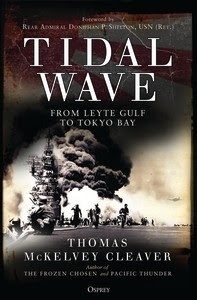
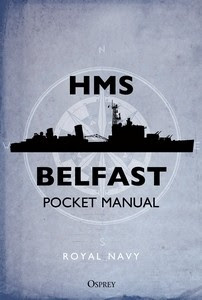


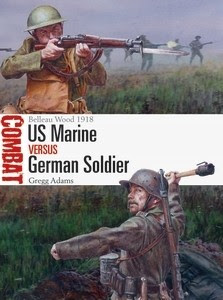

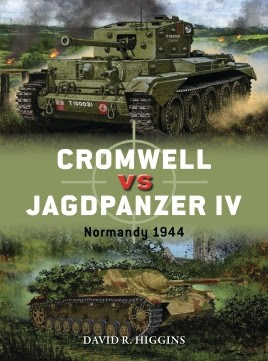

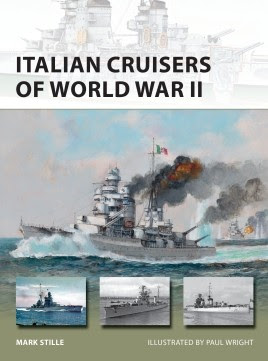
No comments:
Post a Comment